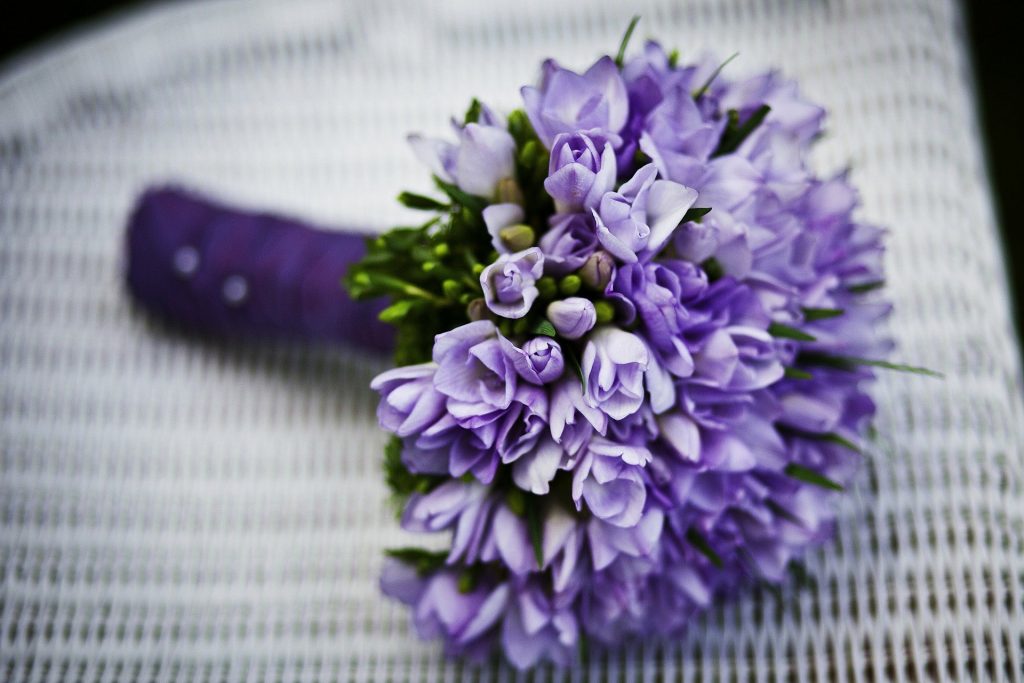I know I sound like a total grump but I’ve never been a fan of fresh flowers. I just don’t see the point in giving people something that’s going to die in a few days. I should point out that this has rarely been a problem day-to-day as Andrew isn’t much into giving flowers either.
My indifference to cut flowers means I’ve unintentionally been super eco-friendly, as behind the scent and pretty displays, there’s death and destruction of the natural world. I knew it.
So wave bye-bye to this Valentine’s staple and buy yourself a locally-grown pot plant instead because cut flowers are pretty bad.
Cut flowers are riddled with chemicals
Unlike edible crops, cut flowers don’t have to follow tight regulations on pesticide residues. This means that the pesticides used on cut flowers can secrete into the soil, and eventually water systems, and pollute the air. The insect killing machine of choice is methyl bromide (I don’t know why but I think this sounds like the name of an old lady superhero), a chemical that’s highly toxic to humans and which is five times more destructive to the ozone layer than carbon dioxide (source).
Keeping cut flower alive takes tonnes of energy and water
Flowers need a lit of water and as they’re often grown in countries prone to drought, like Kenya, this means local wildlife and habitats suffer to keep the flowers blooming. As Alan Weisman writes in his excellent book ‘The World Without Us’, “The amount of water a typical flower exporter therefore ships to Europe each year equals the annual needs of a town of 20,000. During droughts, flower factories with production quotas stick siphons into Lake Naivasha, a papyrus-lined freshwater bird and hippo sanctuary just downstream from the Aberdares. Along with water, they suck up entire generations of fish eggs”. (source)
‘The World Without Us’ was published in 2007 and thankfully some flower farms are now aiming towards less polluting methods. But it can take around 40 years for freshwater to recover from such high levels of pollution and this can only happen if there’s no further impact from humans during that time (source), which seems unlikely.
As if the damage to lakes and waterways wasn’t bad enough, once the flowers are picked, they have to be transported and stored in refrigerated planes, lorries and warehouses. Once cut, these flowers are already dead, so it’s a race against time and decomposing to get them into the shops.
This means lots of refrigeration.
Sending the roughly 100 million roses of a typical Valentine’s Day produces some 9,000 metric tons of carbon dioxide (CO2) emissions from field to U.S. florist (source). Ironically, it can cost less energy to import flowers from warmer regions, such as Kenya, than it can to grow them ‘locally’ in artificially lit and heated greenhouses in the Netherlands (source).

Violets are blue,
These flowers will soon be dead,
And have wasted lots of CO2.
Cut flowers are shipped thousands of miles around the world
In the UK we spend £2.2bn a year on flowers but only 10% of these are grown here. The rest are imported to the Netherlands from Kenya, Ethiopia and Columbia and then exported from the Netherlands to the UK and around the world. That’s a lot of air-miles for something that might last you two weeks tops (source).
Cut flowers are usually wrapped in plastic
It’s not long before plastic comes into any discussion about whether something is eco friendly or not. Plastic is prolific and many bouquets are wrapped in it. There are exceptions though, although most supermarket flowers are wrapped in plastic, Morrisons and Sainsbury’s both sell flowers wrapped in paper instead.
If you’re buying flowers from a florist, then ask for them to be wrapped in paper.
So what to send instead of flowers?
If you still want to buy (or receive!) cut flowers then there are some eco-friendly options, including buying:
- Fair Trade flowers
- organic flowers
- locally grown flowers
- flowers that are in season
Another option is to buy flowers that have been grown sustainably. Look for flowers the with Florverde label on them as this organisation champions sustainable flower farming practices in Columbia. Wild and Wonderous Flowers is one of the only UK florists I could find that use this label.
If you want to send flowers but want to avoid cut flowers altogether than there are some more eco-friendly options, including:
- buying a locally grown pot plant in a ceramic pot
- giving a bunch of locally grown herbs – thoughtful and tasty!
- giving a card or picture decorated with foraged leaves
- giving seeds or bulbs for people to grow their own flowers
- pick some wild flowers and give these as a bouquet – before you strip your local country side of all its flora, check out this interesting article
 on what wild flowers you can and can’t pick.
on what wild flowers you can and can’t pick.
The might not have the instant impact of a fresh scented, dazzling bouquet but they come with a lot less eco-guilt and will last a heck of a lot longer.